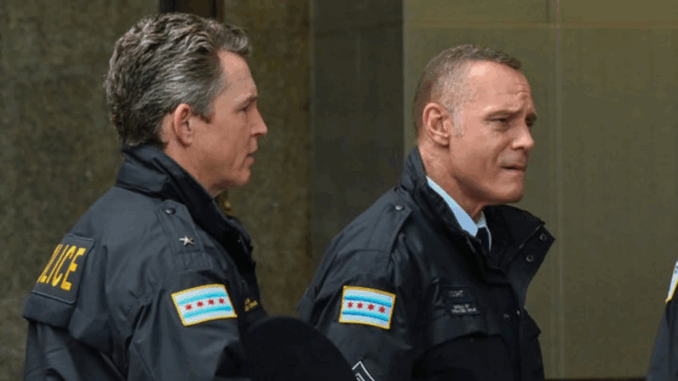
How the Hit NBC Drama Turns Fiction Into Fiery Reality—No CGI Required**
Since Chicago Fire first blazed onto TV screens in 2012, it has set a new gold standard for realism in action television. More than just a scripted series, it’s a visceral experience—bringing viewers face-to-face with the pulse-pounding world of first responders. From explosive infernos to heart-stopping rescues, Chicago Fire doesn’t just depict danger—it lives it.
But how does the show pull off such edge-of-your-seat intensity without falling back on green screens and special effects? The answer lies in a production process that’s every bit as daring and disciplined as the firefighters it portrays.
Real Flames, Real Stakes: The Art of Controlled Chaos
Unlike many television dramas that rely heavily on computer-generated effects, Chicago Fire goes all-in on authenticity—filming with real fire. Burning buildings, torched vehicles, smoke-filled stairwells—what you see is what’s actually happening on set.
At the heart of this fiery realism is a team of fire safety engineers and special effects supervisors who design scenes that balance maximum impact with maximum safety. Every blaze is tightly choreographed and controlled, with state-of-the-art sprinkler systems and suppression tech standing by. Real medics and firefighters remain on set at all times, ensuring the cast and crew stay protected even as the temperature rises.
This commitment to practical effects gives each episode a raw, immersive quality. The flickering light, the heat on actors’ faces, the unpredictable nature of live fire—it’s all there, and it’s all real.
Firehouse 51’s Secret Weapon: The Chicago Fire Department
A critical pillar of Chicago Fire’s realism is its deep collaboration with the Chicago Fire Department (CFD). From day one, the show has worked hand-in-hand with the department to ensure procedural accuracy and professional respect.
Veteran CFD officials, including former commander Steve Chikerotis, have served as technical advisors, trainers, and even on-screen background performers. Their mission? To make sure everything—from how a firefighter swings an axe to how a medic administers CPR—reflects real-life practices.
“We’re not just telling stories—we’re representing a profession,” Chikerotis once noted. “It has to be right.”
Training Like the Pros: No Actor Left Behind
For the stars of Chicago Fire, playing a hero isn’t just about hitting marks and memorizing lines—it’s about training like the real deal.
Before stepping onto set, every main cast member undergoes intense firefighter training. Jesse Spencer (Matthew Casey), Taylor Kinney (Kelly Severide), Kara Killmer (Sylvie Brett), and Miranda Rae Mayo (Stella Kidd) have all learned to:
-
Operate oxygen tanks and SCBA breathing equipment
-
Break down doors and ventilate rooms
-
Navigate smoke-filled buildings
-
Perform rescues in simulated high-heat environments
This training ensures that their physicality on screen—how they breathe, sweat, and react—feels absolutely genuine. In fact, many of their most intense performances come not from acting, but from truly enduring the physical strain of the moment.
No Stunt Doubles Required: Courage in Every Scene
One of the most remarkable aspects of Chicago Fire is how often its lead actors perform their own stunts. These aren’t minor action moments—they’re adrenaline-fueled sequences involving burning stairwells, collapsing ceilings, and towering ladder rescues.
-
Taylor Kinney once entered a smoke-filled structure for a scene in which Severide rescues a child—completely unassisted.
-
Jesse Spencer filmed a scene while breathing from an actual oxygen tank for over ten minutes in dense smoke conditions.
-
Miranda Rae Mayo climbed a four-story ladder herself, performing a real rooftop rescue with zero CGI involved.
Their willingness to face real elements results in authentic reactions: visible exhaustion, trembling fear, and sweat that isn’t sprayed on by makeup—it’s earned.
A Firehouse Built from the Ground Up: Creating Controlled Infernos
While many exterior shots are filmed on location throughout Chicago, Chicago Fire also relies on an intricate, state-of-the-art soundstage at Cinespace Chicago Film Studios. Here, the crew builds customizable “burn rooms”—modular sets that can be ignited, smoked, flooded, or collapsed as needed.
These sets allow the production team to:
-
Adjust smoke density and airflow
-
Raise or lower the temperature
-
Collapse ceilings or tilt floors
-
Reroute lighting and sound to match action cues
It’s a high-tech playground designed to replicate the most dangerous environments—over and over again—for multiple takes from multiple camera angles.
Safety First: Behind-the-Scenes Heroics
With all this fire and fury, safety remains paramount. Chicago Fire has earned a reputation as one of the most safety-conscious crews in the industry. Every major shoot begins with:
-
Live rescue drills
-
Emergency escape routes for cast and crew
-
Medical briefings for actors
-
Regular air quality and heat testing in fire sets
-
Protective gear even for behind-the-camera crew
Whether it’s the camera operator ducking falling debris or a boom mic tech dodging fake sparks, the entire crew is protected with the same vigilance granted to the actors.
The Final Word: No Gimmicks—Just Grit
At its core, Chicago Fire isn’t just about explosions and rescues—it’s about dedication. The dedication of its actors, who train and perform like first responders. The dedication of its advisors and crew, who go to extraordinary lengths to recreate firefighting with precision and honor. And the dedication of a show that never takes shortcuts when it comes to authenticity.
In an age when CGI dominates the screen, Chicago Fire continues to do the unthinkable: set real fires, push its cast to their limits, and bring its audience into the inferno—safely, powerfully, and with heart.
Because at Firehouse 51, it’s not just a show. It’s a lived experience.
